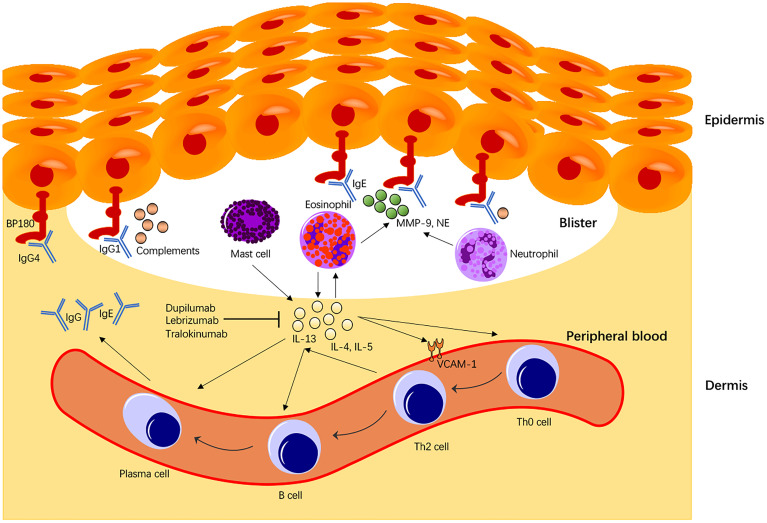Figure 2.
Immunological roles of IL-13 in BP pathogenesis. IL-13 secreted from Th2 cells, or mast cells activates eosinophils that produce more IL-13 molecules in a “positive feedback” pattern. IL-13 also mediates the transition of Th0 to Th2 cells, the primary cells expressing IL-13. Moreover, IL-13 promotes activated B cell maturation to plasma cells expressing BP IgE autoantibodies and enhances BP immunoglobulins (Igs) class switching. IL-13 also enhances VCAM-1 expression that promotes transmigration of eosinophils and basophils to the dermis. In BP, IL-13 also promotes B cell maturation and directly stimulates plasma cells to secrete BP autoantibodies that play a central role in the BP disease pathomechanism. Secretion of proteolytic enzymes including NE and Metalloproteinase-9 from eosinophils or neutrophils causes degradation of BP180 molecules, contributing to the BP disease pathology.

